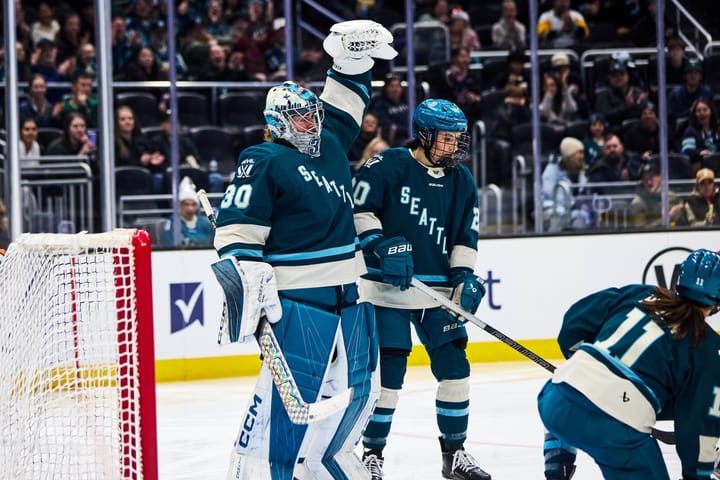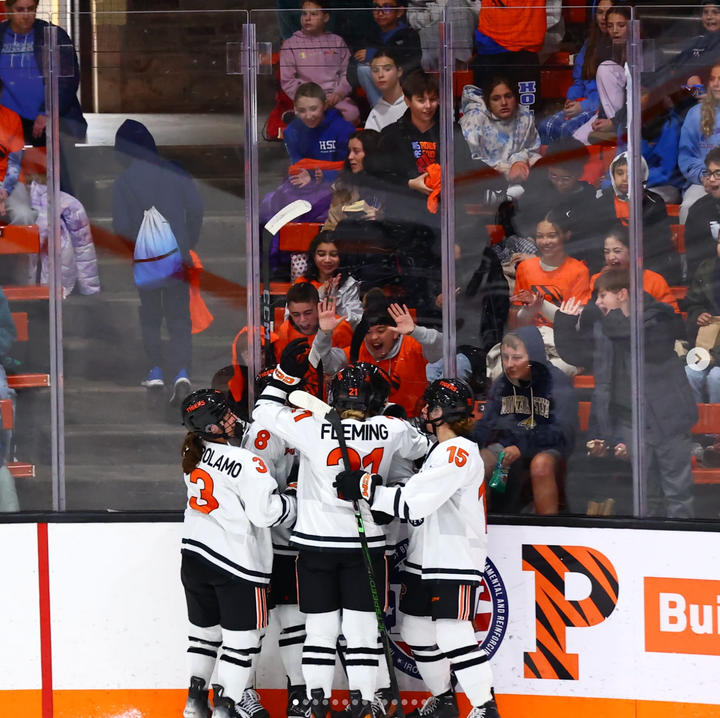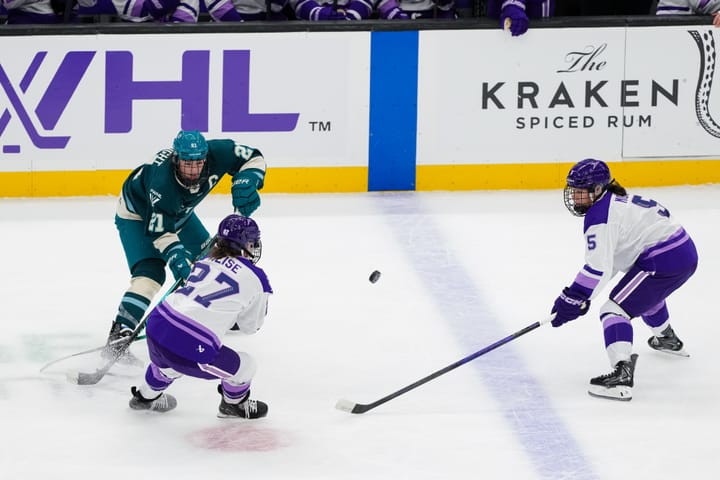Harrison Browne talks retirement, his comeback, and advocacy
Browne makes difficult decision to come out of retirement and return to the NWHL.
For transgender athletes, deciding when to pursue a medical transition is deeply personal. Because medical transitioning involves changing sex hormones, athletic performance is almost immediately affected when treatment begins. Last March, Harrison Browne, the first transgender athlete to ever play professionally, announced his retirement from the NWHL in order to pursue testosterone therapy to bring his body into more alignment with his gender identity. Just recently Browne made a second announcement, letting his fans know that he’d decided to come out of his brief retirement and would be back for at least one more season, signing a contract with the New York Riveters.
For Browne, it was not a decision that came easy. As the summer wore on, Browne didn’t start the hormone therapy that would have made him ineligible to play under the NWHL’s new transgender participation policy. In an interview for The Ice Garden, Browne explains that instead he found comfort in his usual training routine.
“I felt like I had been doing it my whole life, so i just kept going in the gym and on the ice. I felt like I had more hockey to play, I still felt like my game was still good and I was happy with the way I was playing,” Browne said.
Browne’s thought process makes intuitive sense for any athlete. After all, who would willingly choose to walk away when their game still feels sharp?
Trans athletes, however, have other calculations to make in their careers. Because of the direct influence that testosterone has on athletic performance, pursuing a medical transition is especially disruptive to the careers of trans athletes. As a former closeted athlete myself who grew up in a time when trans people were not welcome on the field, I had to decide between the sports I loved and my gender.
The field or court was my only refuge from my dysphoria. When I was playing, there was just the ball, my opponents, and my teammates. I wasn’t a boy or girl, I was just an athlete. When forced to choose between my gender and sports, I chose sports. That decision ended up costing me 20 years of living my authentic life.
Professional athletes tend to have a special relationship with their bodies, but for trans athletes, it’s a juxtaposition. The bodies that provide them with their passion for their sport, in some cases providing an education or even a living, also betray them in very fundamental, gendered ways. It can be a love-hate relationship between a trans athlete and their body.
And for Browne, his decision to come back was deeper than just how well his training was going.
“I thought that the message that I could put out there, living your life authentically, would be more powerful as an active athlete,” Browne said. “I felt that I didn’t really give enough time to let it blossom into what it could be, so I thought that I could come back and do even more good than I already have.”
Get geared up for season and contribute to a good cause! Will be donating my proceeds to LGBTQ organization. 🏒🏳️🌈 https://t.co/jO4hqUNk1K pic.twitter.com/vANXFOZ62q
— Harrison Browne (@Hbrowne24) August 31, 2017
He’s confident in his decision and feels confident that he can keep his gender dysphoria at bay and be a productive player for the Riveters.
According to Browne, just being able to come out last season and have people use his correct name and pronouns were enough to alleviate a lot of his dysphoria. Having shed the closet, he was able to focus more on hockey and his LGBTQ advocacy while helping the Beauts win the Isobel Cup just five days after announcing his retirement.
Caitlyn Jenner had the chance to complete her playing career long before transitioning, but for many trans athletes today, transitioning means an end to their official playing days. Browne himself admits that having a go in men’s hockey would be a tough sell, citing his size at 5’5”.
At the same time Browne came out publicly last year, the NWHL introduced a new transgender participation policy.
The policy itself states that trans women (who were assigned male at birth), must have testosterone at the level of a cisgender female in order to be eligible, while trans men like Browne can compete given they haven’t started hormone replacement therapy with testosterone.
The NWHL partnered with the You Can Play project to develop their new policy, a move that Browne praised.
“You Can Play did a really good job in helping the NWHL in language and how to approach it. They are experts and it’s good that the league brought them.”
The policy itself mimics the current Olympic and NCAA trans inclusion policies in that it has very clear and fair standards for athletes to meet. More importantly, however, the policy and the warm welcome that Browne received for coming out last year both work to ensure that even fewer trans athletes will have to make the difficult decision between living their authentic selves and their athletic careers.
While Browne has received overwhelming support from his teammates, fans, and the league, it’s hard to say how people would react to a trans woman who wants to play women’s professional hockey. Very few trans women have ever pursued professional athletics before, and the public ridicule faced by the likes of Fallon Fox and Renee Richards would be a difficult obstacle to overcome for any trans woman thinking about dipping her toe in the waters of pro women’s sports. Browne, however, says there’s a lot of ignorance surrounding the science of hormones and athletics and hopes that the league’s fans would welcome a trans woman with open arms.
“People are really ignorant to what being transgender means and obviously I’m still in a female body and haven’t undergone hormone therapy but I still see people who think I have and I get criticized for that,” Browne said. “People wouldn’t understand the androgen (testosterone) blockers that trans women take. They don’t understand that there’s no advantage when you have [blockers] in your body.”
A medical transition would mean the end of Browne’s playing career, so finding that right balance between making his body right finally at 24 and the game he loves is key.
“It’s tough. It’s a really big crossroad that people don’t have to deal with and people don’t really understand what that means,” Browne said. “It’s fine when I’m at the rink, it’s fine when I’m talking with people that know my story who know what to call me but it’s difficult when I go out in public life and people don’t really know how to address me. I enjoy hockey and I love helping people and reaching out to people. I can deal with that a little bit longer in the public eye.”
So with his medical transition on the backburner, it feels like the start of just another season for Browne, who’s looking forward to being in a new environment and meeting his new teammates and seeing how they all click. For now though, Browne is just ready to get back out and play hockey again, and maybe that’s the most important thing, in the end.
It’s so rare to have a positive public example of a trans athlete who we can look up to and learn from, but Browne definitely fits the bill. My mind goes back to my own adolescence, growing up thinking I was all alone as a trans athlete, dreading the day I’d have to choose between my passion for sports and being true to my own self. All of those sleepless nights add up. What I would have given for a role model to show me that the life I dreamt about was even possible.
At the end of the day, that’s going to be the real impact of Harrison Browne’s legacy.





Comments ()